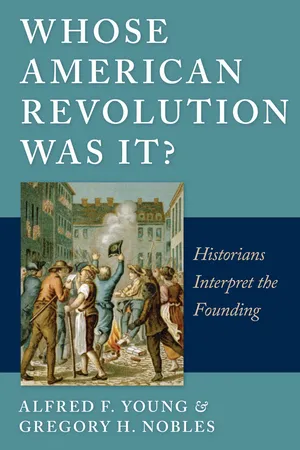
Whose American Revolution Was It?
Historians Interpret the Founding
- 293 pages
- English
- ePUB (mobile friendly)
- Available on iOS & Android
About This Book
The meaning of the American Revolution has always been a much-contested question, and asking it is particularly important today: the standard, easily digested narrative puts the Founding Fathers at the head of a unified movement, failing to acknowledge the deep divisions in Revolutionary-era society and the many different historical interpretations that have followed. Whose American Revolution Was It? speaks both to the ways diverse groups of Americans who lived through the Revolution might have answered that question and to the different ways historians through the decades have interpreted the Revolution for our own time. As the only volume to offer an accessible and sweeping discussion of the period’s historiography and its historians, Whose American Revolution Was It? is an essential reference for anyone studying early American history. The first section, by Alfred F. Young, begins in 1925 with historian J. Franklin Jameson and takes the reader through the successive schools of interpretation up to the 1990s. The second section, by Gregory H. Nobles, focuses primarily on the ways present-day historians have expanded our understanding of the broader social history of the Revolution, bringing onto the stage farmers and artisans, who made up the majority of white men, as well as African Americans, Native Americans, and women of all social classes.
Frequently asked questions
Information
Index
Table of contents
- Cover Page
- Title Page
- Copyright Page
- Contents
- Introduction
- American Historians Confront “The Transforming Hand of Revolution”
- Historians Extend the Reach of the American Revolution
- Afterword
- Acknowledgments
- Index
- About the Authors
- Footnotes